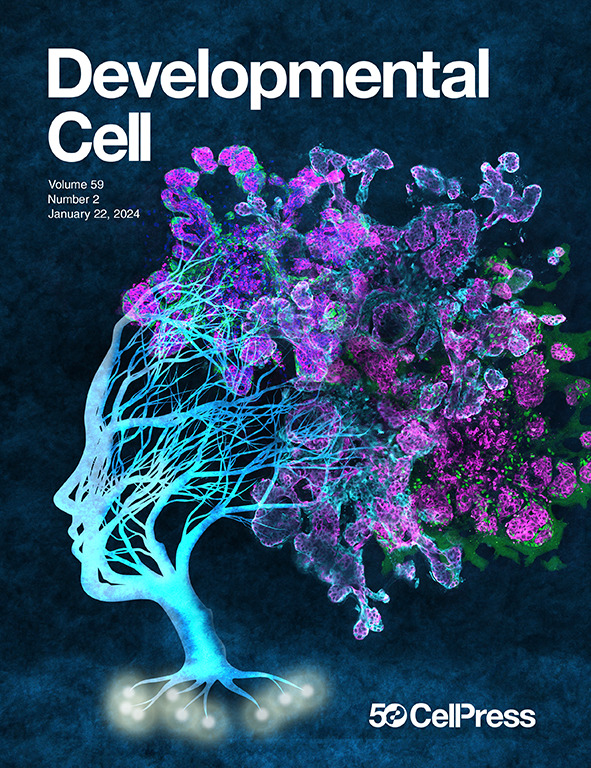单细胞转录组学分析强调了小麦对赤霉病的敏感性
IF 8.7
1区 生物学
Q1 CELL BIOLOGY
引用次数: 0
摘要
大多数入侵真菌可以被植物免疫系统识别并触发宿主防御,但适应性病原体可以引起易感性。多细胞植物可能使用细胞分化策略来限制非适应性真菌的入侵并产生适应性真菌的定植。本研究采用单细胞RNA测序(scRNA-seq)技术,鉴定了接种后1、2和3天小麦胚芽鞘对适应型谷物镰刀菌(Fgr)和非适应型玉米尖孢镰刀菌(Foc)的反应。我们分析了9万多个细胞的转录组,并确定了8种主要细胞类型的细胞类型特异性反应:气孔、表皮、绿组织、薄壁组织、外鞘、内鞘、韧皮部和原形成层。差异表达分析表明,免疫途径的上调在非宿主对Foc的抗性中是区隔的,但在与Fgr的易感相互作用中却是广泛存在的。伪时间分析显示,叶肉细胞在疾病进展过程中持续发生状态转变,Fgr诱导绿色组织细胞处于低转录活性状态。本文章由计算机程序翻译,如有差异,请以英文原文为准。

Single-cell transcriptomic analysis highlights specific cell types manipulated by Fusarium head blight fungus leading to wheat susceptibility
Most invading fungi can be recognized by the plant immune system and trigger host defenses, but adapted pathogens can cause susceptibility. Multicellular plants might use cell-differentiated strategies to restrict non-adapted fungi invasion and to yield adapted fungi colonization. Here, we employed single-cell RNA sequencing (scRNA-seq) to identify the responses of wheat coleoptiles to the adapted Fusarium graminearum (Fgr) and the non-adapted Fusarium oxysporum f. sp. cubense (Foc) at 1, 2, and 3 days post inoculation. We profiled the transcriptomes of over 90,000 cells and identified cell-type-specific responses of eight major cell types: stomata, epidermis, chlorenchyma, parenchyma, outer sheath, inner sheath, phloem, and procambium. Differential expression analyses indicated that the upregulation of immune pathways was compartmentalized in nonhost resistance to Foc but widespread in susceptible interaction with Fgr. Pseudotime analyses showed continuous state transitions of mesophyll cells along disease progression and that Fgr induces a state of low transcriptional activity in chlorenchyma cells.
求助全文
通过发布文献求助,成功后即可免费获取论文全文。
去求助
来源期刊

Developmental cell
生物-发育生物学
CiteScore
18.90
自引率
1.70%
发文量
203
审稿时长
3-6 weeks
期刊介绍:
Developmental Cell, established in 2001, is a comprehensive journal that explores a wide range of topics in cell and developmental biology. Our publication encompasses work across various disciplines within biology, with a particular emphasis on investigating the intersections between cell biology, developmental biology, and other related fields. Our primary objective is to present research conducted through a cell biological perspective, addressing the essential mechanisms governing cell function, cellular interactions, and responses to the environment. Moreover, we focus on understanding the collective behavior of cells, culminating in the formation of tissues, organs, and whole organisms, while also investigating the consequences of any malfunctions in these intricate processes.
 求助内容:
求助内容: 应助结果提醒方式:
应助结果提醒方式:


